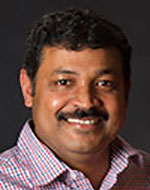Dates: Wednesday, 17 April 2019-Thursday, 18 April 2019
Time: 11:00-18:30
Room: John Holland
Track Description
The Internet of Things will be absolutely reliant on fast, efficient and reliable connectivity and communications. While developing new applications that offer consumers and organizations novel possibilities, it is important to ensure that the connectivity required for the application exists and is fit for purpose. For this reason the involvement of the community and industry working in the area of Advanced Communications and Connectivity is vital to ensure that the IoT succeeds.
This track will tackle the broad range of different environments and application settings for the Internet of Things, as one connectivity solution will not work across all application use cases. For this reason, the topics this track will cover will include:
- Satellite for broad area coverage and applications in thinly populated areas that do not offer other communication solutions
- Very low-power wireless solutions for short-range applications such as LPWAN, LoRa, SigFox
- Present (LTE) and future (5G) mobile network solutions
- Wired and optical fibre connections
- The interconnections and interoperability which are evolving between these different networks
Schedule
Wednesday, 17 April 2019
11:00-13:00 Session 1
Talk 1 “IoT and Beyond: The Edge, the Network, and … AI”, Ernoe Kovacs, Head IoT ResearchNEC Laboratories, Heidelberg, Germany
Talk 2 “5G – A Door Opener for 6G?” Gerhard Fettweis, Vodafone Chair Professor, TU Dresden
Talk 3 “Dynamic Deployment of Resources in Response to User Mobility Patterns in a Mobile Edge Computing Context”, Thas A Nirmalathas, Professor of Electrical and Electronic Engineering, University of Melbourne, Australia
Panel Discussion
13:00-14:00 Lunch
14:00-16:00 Session 2
Talk 4 “European 5G Research Status and Future”, Colin Wilcock, Head of Radio Network Standardization, Nokia
Talk 5 “RIOT: Inter-Networking the IoT”, Cenk Gundogan, Internet Technologies Research Group, Hamburg University of Applied
Sciences
Talk 6 “Round and Round They Go: Enabling IoT Use Cases Through Satellites”, Girish Chandran, VP & CTO, Viasat
Panel Discussion
16:00-16:30 Coffee Break
16:30-18:30 Session 3
Talk 7 “IEEE 802.3 Ethernet Copper and Optical Support for IoT”, David Law, Distinguished Technologist, Hewlett Packard Enterprise
Talk 8 “IEEE 802.11 Technologies: Enabling IoT Innovation from Sensors to Cars”, Dorothy Stanley, Head Standards Strategy, Hewlett Packard Enterprise
Talk 9 “Commercial IoT Applications Using 5G and LPWAN Technologies”, Man Cheuk Ng, CTO, Suga International Holdings
Wrap-up and Summary
Thursday, 18 April 2019
11:00-13:00 Session 4
Talk 1 “How BT is Realising the potential of IoT for Enterprise”, Simon Wood, General Manager IoT, BT
Talk 2 “How are NB-IOT and LTE-M Progressing as a Technology”, Shane Rooney, Executive Director IoT Programme, GSMA
Talk 3 “Autonomous Systems in Industry”, Marco Ulrich, ABB Corporate Research Centre, Germany
Talk 4 “Multitier Cloud RAN for Efficient Data Management in HetNets: A 5G Perspective”, Bala Krishna Maddali, Guru Gobind Singh Indraprastha University, New Delhi, India
Panel Discussion
13:00-14:00 Lunch
14:00-16:00 Session 5
Talk 5 “Coherent Massive MIMO: Fundamental Advantages and Implementation Challenges”, Mihai Banu, VP R&D and CTO, Blue Danube Systems
Talk 6 “Cooperative IoT Edge Analytics: Benefits and Trade-Offs”, Georgios Iosifidis, Ussher Assistant Professor in Future Networks, Trinity College Dublin, Ireland
Panel Discussion
Wrap-up and Summary
16:00-16:30 Coffee Break
Track Co-Chairs
Xavier Costa-Pérez, NEC Laboratories Europe
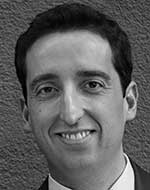 Xavier Costa-Pérez is Head of 5G Networks R&D and Deputy General Manager of the Security & Networking R&D Division at NEC Laboratories Europe. His team contributes to products roadmap evolution as well as to European Commission R&D collaborative projects and received several awards for successful technology transfers. In addition, the team contributes to related standardization bodies: 3GPP, ETSI NFV, ETSI MEC, IETF and OPNFV. Xavier is a 5GPPP Technology Board member and the Technical Manager of the 5G-Transformer project. He has served on the Program Committees of several conferences (including IEEE Greencom, WCNC, and INFOCOM), published at top research venues and holds several patents. He received both his M.Sc. and Ph.D. degrees in Telecommunications from the Polytechnic University of Catalonia (UPC) in Barcelona and was the recipient of a national award for his Ph.D. thesis.
Xavier Costa-Pérez is Head of 5G Networks R&D and Deputy General Manager of the Security & Networking R&D Division at NEC Laboratories Europe. His team contributes to products roadmap evolution as well as to European Commission R&D collaborative projects and received several awards for successful technology transfers. In addition, the team contributes to related standardization bodies: 3GPP, ETSI NFV, ETSI MEC, IETF and OPNFV. Xavier is a 5GPPP Technology Board member and the Technical Manager of the 5G-Transformer project. He has served on the Program Committees of several conferences (including IEEE Greencom, WCNC, and INFOCOM), published at top research venues and holds several patents. He received both his M.Sc. and Ph.D. degrees in Telecommunications from the Polytechnic University of Catalonia (UPC) in Barcelona and was the recipient of a national award for his Ph.D. thesis.
Jacqueline Walker, University of Limerick
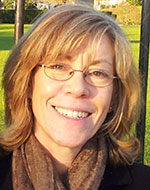 Dr. Jacqueline Walker is a lecturer in the Department of Electronic and Computer Engineering at the University of Limerick, Ireland where she teaches Cloud Computing, and Mobile Wireless Communications. Dr Walker gained her BE degree from with first class honours from The University of Western Australia and her PhD degree from Curtin University of Technology where she made significant contributions to time transfer and synchronization in communications networks. She has also published in biomedical, speech and music signal processing and is currently pursuing research in software radio satellite modems for time transfer over geostationary satellite.
Dr. Jacqueline Walker is a lecturer in the Department of Electronic and Computer Engineering at the University of Limerick, Ireland where she teaches Cloud Computing, and Mobile Wireless Communications. Dr Walker gained her BE degree from with first class honours from The University of Western Australia and her PhD degree from Curtin University of Technology where she made significant contributions to time transfer and synchronization in communications networks. She has also published in biomedical, speech and music signal processing and is currently pursuing research in software radio satellite modems for time transfer over geostationary satellite.
Track Speakers
Mihai Banu
 Dr. Banu received a PhD degree in Electrical Engineering from Columbia University in 1984. He was with Bell Laboratories in Murray Hill, NJ from 1980 to 2001 as Summer Intern, MTS, Dpt. Head and R&D Director and with Agere Systems, a Lucent spinoff, from 2001 to 2004 as R&D Director. His Bell Labs/Agere contributions include seminal research in analog and RF integrated circuits and leading advanced development in IC Technology and RF Systems for wireless. In 2005 Dr. Banu started MHI Consulting LLC and from 2005 to 2013 provided consulting services and conducted radio-system research with NSF funding. He founded Blue Danube Systems Inc. to apply his research results to the development of a new low-cost Coherent Massive MIMO product for 4G and 5G. In 2013, Blue Danube Systems received funding from venture capital. Dr. Banu is an IEEE Fellow, received several IEEE and Lucent awards and is author of many publications and patents.
Dr. Banu received a PhD degree in Electrical Engineering from Columbia University in 1984. He was with Bell Laboratories in Murray Hill, NJ from 1980 to 2001 as Summer Intern, MTS, Dpt. Head and R&D Director and with Agere Systems, a Lucent spinoff, from 2001 to 2004 as R&D Director. His Bell Labs/Agere contributions include seminal research in analog and RF integrated circuits and leading advanced development in IC Technology and RF Systems for wireless. In 2005 Dr. Banu started MHI Consulting LLC and from 2005 to 2013 provided consulting services and conducted radio-system research with NSF funding. He founded Blue Danube Systems Inc. to apply his research results to the development of a new low-cost Coherent Massive MIMO product for 4G and 5G. In 2013, Blue Danube Systems received funding from venture capital. Dr. Banu is an IEEE Fellow, received several IEEE and Lucent awards and is author of many publications and patents.
Talk Title: Coherent Massive MIMO: Fundamental Advantages and Implementation Challenges
The classical Massive MIMO concept aims to achieve multi-layers transmissions over common spectrum by exploiting the wireless channel reciprocity in TDD. The usual method includes attaching a digital radio chain to every antenna element and performing complex digital signal processing. The key assumptions are the HW reciprocity between the transmitter and the receiver in each radio chain and the correct estimation of many processed wireless channels, which are sounded with pilots. No precise match between the radio chains is required because the radio chains are automatically included in the sounded channels. However, this classical approach has fundamental shortcomings. These include extremely challenging application to FDD, difficult inter-cell interference management and high sensitivity to practical imperfections such as channel estimation errors and HW reciprocity errors, which rapidly degrade the system performance. These fundamental limitations are reduced significantly if the Massive MIMO system is designed to be RF coherent, i.e. if all radio chains have almost identical electrical characteristics to a high degree of precision. Application to FDD becomes natural, the inter-cell interference can be easily reduced from the cloud and the system becomes robust against practical imperfections. Furthermore, RF coherency allows a significant reduction in the number of radio chains lowering cost and power dissipation and has other benefits such as easy formation of narrow vertical beams for illuminating high rises. We call the resulting system Coherent Massive MIMO, which is another name for classical phased arrays applied to commercial wireless communications. The age-old challenge in fabricating phased arrays has been their very high cost but recently this challenge was overcome. In this talk we present our low cost Coherent Massive MIMO for mid-bands and we comment on the importance of this type of system for current and future wireless systems.
Girish Chandran
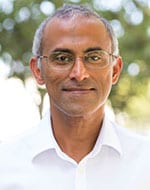 Girish Chandran, Vice President and Chief Technical Officer, VIASAT. Girish joined Viasat in October 2007 as a Principal Engineer. In September 2013, he was appointed Chief Technology Officer — Commercial Networks and in May 2017, he assumed his current position as Vice President and Chief Technical Officer.
Girish Chandran, Vice President and Chief Technical Officer, VIASAT. Girish joined Viasat in October 2007 as a Principal Engineer. In September 2013, he was appointed Chief Technology Officer — Commercial Networks and in May 2017, he assumed his current position as Vice President and Chief Technical Officer.
Girish has extensive experience building multimedia networks. Prior to joining Viasat, from 2001 to 2007, Girish served as Vice President of Engineering at Newtec America Inc., a satellite communications equipment provider. From 1995 to 2001, he held several roles, including Vice President of Systems Engineering, at Tiernan Communications Inc. (acquired by Radyne Comstream Inc.), a provider of video compression and transmission solutions.
Girish earned a Ph.D. degree in Electrical Engineering from the University of California, San Diego, an M.S. degree in Electrical Communication Engineering from the Indian Institute of Science and a BSc. degree in Physics from the University of Kerala.
Talk Title: Round and Round They Go: Enabling IoT Use Cases Through Satellites
Satellites have long been used for connecting people and things in hard to reach places. It complements terrestrial connectivity. However, traditionally satellite connectivity has been fairly expensive. Recently, a number of small satellites have been launched to serve the IoT market. We will examine the techno-economics of satellites and the economics of IoT and the use cases where wide area connectivity provided by satellites can make a meaningful difference.
Gerhard Fettweis
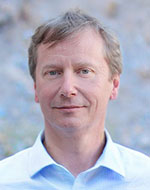 Gerhard Fettweis earned his Ph.D. under H. Meyr’s supervision from RWTH Aachen in 1990. After one year at IBM Research in San Jose, CA he moved to TCSI Inc., Berkeley, CA. Since 1994 he is Vodafone Chair Professor at TU Dresden, Germany, with currently 20 companies from Asia/Europe/US sponsoring his research on wireless transmission and chip design. He coordinates 2 DFG centers at TU Dresden, cfAED and HAEC. Gerhard is IEEE Fellow, member of acatech, has an honorary doctorate from TU Tampere, and has received multiple awards. In Dresden he has spun-out ten startups, and setup funded projects of more than EUR 1/3 billion volume. He has helped organizing IEEE conferences, most notably as TPC Chair of IEEE ICC 2009, IEEE TTM 2012, and General Chair of VTC Spring 2013. He remains active within IEEE.
Gerhard Fettweis earned his Ph.D. under H. Meyr’s supervision from RWTH Aachen in 1990. After one year at IBM Research in San Jose, CA he moved to TCSI Inc., Berkeley, CA. Since 1994 he is Vodafone Chair Professor at TU Dresden, Germany, with currently 20 companies from Asia/Europe/US sponsoring his research on wireless transmission and chip design. He coordinates 2 DFG centers at TU Dresden, cfAED and HAEC. Gerhard is IEEE Fellow, member of acatech, has an honorary doctorate from TU Tampere, and has received multiple awards. In Dresden he has spun-out ten startups, and setup funded projects of more than EUR 1/3 billion volume. He has helped organizing IEEE conferences, most notably as TPC Chair of IEEE ICC 2009, IEEE TTM 2012, and General Chair of VTC Spring 2013. He remains active within IEEE.
Talk Title: 5G – A Door Opener for 6G?
As we see 5G unfold, expectations on the economic and societal impact are very high. Many new opportunities shall emerge for new business opportunities. Besides Gb/s data rates, the Tactile Internet being the most highlighted promise of 5G, enabling remote control applications over cellular. We shall review opportunities and their technical requirements. This helps to build an understanding to detect missing pieces.
1G was a great step creating the vision of ubiquitous voice telephony, but we needed 2G to deliver (like international roaming). 3G was a great step towards ubiquitous cellular data, but we needed 4G to fix the challenges. 5G will be an infliction point in bringing cellular to new applications. However, do we need to use the 5G system to understand what is really needed, and have to wait for 6G as a fix? And is this fix required to make the Tactile Internet a reality?
Cenk Gündoğan
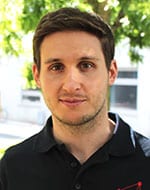 Cenk Gündoğan is a research assistant in the Internet Technologies (INET) research group at Hamburg University of Applied Sciences (HAW) and received his M.Sc. degree in Computer Science from the Freie Universität Berlin in 2016. He currently pursues a Ph.D. degree in the German research project I3 (Information-centric Networking (ICN) for the Industrial Internet) and investigates ICN benefits for challenged IoT deployments.
Cenk Gündoğan is a research assistant in the Internet Technologies (INET) research group at Hamburg University of Applied Sciences (HAW) and received his M.Sc. degree in Computer Science from the Freie Universität Berlin in 2016. He currently pursues a Ph.D. degree in the German research project I3 (Information-centric Networking (ICN) for the Industrial Internet) and investigates ICN benefits for challenged IoT deployments.
Cenk joined the RIOT open source project in 2014 and became a core developer and maintainer. Since then, he contributes to the RIOT IPv6 network stack, develops and maintains a Routing Protocol for Low-Power and Lossy Networks (RPL) implementation, and designs new networking protocols that seamlessly integrate ICN into the IoT.
Talk Title: RIOT: Inter-Networking the IoT
RIOT is a free, open source operating system developed by a grassroots community gathering companies, academia, and hobbyists, distributed all around the world. As an OS for the IoT, RIOT runs on most microcontroller architectures (8-bit, 16-bit, 32-bit) and implements relevant open standard protocols supporting an Internet of Things that is connected, secure, durable, and privacy-friendly. RIOT allows for an application programming that either uses cross-platform compiling with C / C++ for developing efficient firmwares, or JavaScript / Lua for rapid prototyping and providing a beginner-friendly entry to IoT development.
This talk introduces the RIOT networking infrastructure, which brings together open standards and open source efforts to provide a healthy IoT. RIOT supports various low-power radio technologies that encompass close-range wireless personal area network (WPAN) radios, such as IEEE 802.15.4 and Bluetooth Low Energy (BLE), as well as long-range and cellular radios, such as LoRa and NB-IoT. RIOT closely follows and implements the IETF envisioned IoT network stack, but also supports alternative approaches, including Thread, LoRaWAN, and Named-Data Networking. This talk further highlights the RIOT abstraction layers that (i) enable an easy development of networked applications, and (ii) allow for portability across varying hardware and software platforms.
George Iosifidis
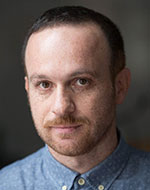 George Iosifidis is the Ussher Assistant Professor in Future Networks, Trinity College Dublin, Ireland. He obtained his M.Sc. (2007) and Ph.D. (2012) degrees from the Department of Electrical and Computer Engineering, University of Thessaly, Greece, and holds an engineering diploma in avionics and quality control. He worked as a Post-doctoral researcher at CERTH, Greece, and Yale university, for 2 years respectively, as an associate research scientist at Yale for 1 year, and as an aircraft engineer from 2001 to 2012. His research interests lie in the area of network optimisation and network economics with applications to wireless networks and edge computing. He is co-recipient of the Best Paper Awards in IEEE WiOpt 2013 and IEEE INFOCOM 2017, a Guest Editor for IEEE JSAC Special Issue in Caching, and has received a Career Development Award from Science Foundation Ireland in 2018.
George Iosifidis is the Ussher Assistant Professor in Future Networks, Trinity College Dublin, Ireland. He obtained his M.Sc. (2007) and Ph.D. (2012) degrees from the Department of Electrical and Computer Engineering, University of Thessaly, Greece, and holds an engineering diploma in avionics and quality control. He worked as a Post-doctoral researcher at CERTH, Greece, and Yale university, for 2 years respectively, as an associate research scientist at Yale for 1 year, and as an aircraft engineer from 2001 to 2012. His research interests lie in the area of network optimisation and network economics with applications to wireless networks and edge computing. He is co-recipient of the Best Paper Awards in IEEE WiOpt 2013 and IEEE INFOCOM 2017, a Guest Editor for IEEE JSAC Special Issue in Caching, and has received a Career Development Award from Science Foundation Ireland in 2018.
Talk Title: Cooperative IoT Edge Analytics: Benefits and Trade-offs
IoT networks are increasingly used for edge data analytics, i.e., collecting and analyzing data at the network edge. However, the IoT devices are typically resource constrained and cannot support the fast and accurate execution of such tasks, while the involvement of distant cloud servers is often impractical and entails huge communication overheads. To address this problem, we propose an experimentally-validated optimization framework for enabling IoT devices to collaboratively execute their tasks, exploiting their proximity and resource complementary. We will present theoretical and experimental evidence that such synergistic modes of operation improve significantly the analytics performance and reduce resource cost, even for intricate analytic tasks such as object recognition in images.
Ernoe Kovacs
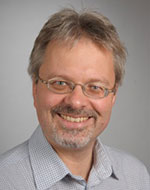 Head of IoT research at the NEC Laboratories Europe, Heidelberg, Germany. Working on advancing the Internet-of-Things into a programmable cloud-edge platform, adding moving objects like cars or drones, and creating new solutions for the Smart Cities of the Future. We are involved in public and private funded cooperative R&D projects in Europe as well as NEC-internal projects. We participate in IoT large scale pilots, for example for autonomous driving cars as well as for building reference zones for Smart Cities in Europe.
Head of IoT research at the NEC Laboratories Europe, Heidelberg, Germany. Working on advancing the Internet-of-Things into a programmable cloud-edge platform, adding moving objects like cars or drones, and creating new solutions for the Smart Cities of the Future. We are involved in public and private funded cooperative R&D projects in Europe as well as NEC-internal projects. We participate in IoT large scale pilots, for example for autonomous driving cars as well as for building reference zones for Smart Cities in Europe.
Talk Title: IoT and Beyond: The Edge, the Network, and … AI
Digital Transformation is everywhere, and 5G is leading the transformation of the global networks into a versatile instrument for realizing advanced services for the Digital Economy. Virtualization is the key concept that enables versatility, flexible resource control and through that cost-effective use of the networks. Virtualization at device level has accelerated cloud computing so that compute resources are nowadays becoming a industrial available resource. Virtualization at network level is bringing virtual network slices – a key concept of 5G – and the associated ability to virtualize network functions. The Internet-of-Things is using the available virtualization techniques already, but is now starting to realize its own aspects of virtualization: virtualization of IoT networks, virtualization at the IoT edge, and most importantly – virtualization of all kind of logical resources in the form of Digital Twins. Waiting for the advancement in AI technologies, Digital Twins will become self-aware and self-adapting entities which are understanding the situation of their real twins as well as the available peers in the hyper-connected cyber-world enabled by the next generation of IoT.
David Law
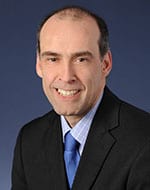 David Law, Hewlett Packard Enterprise, Distinguished Technologist
David Law, Hewlett Packard Enterprise, Distinguished Technologist
David has worked on the specification and development of Ethernet products since 1989 including the development of Ethernet adapter cards, the first stackable Ethernet repeaters, stackable Ethernet switches, as well as being the technical lead on ASIC development teams for stackable repeaters and switching chipsets. Throughout this time David has been a member of the IEEE 802.3 Ethernet Working Group.
David currently serves as IEEE 802.3 Chair, having served as IEEE 802.3 Vice Chair from 1996 to March 2008. David currently also serves as a member of the IEEE-Standards Association (IEEE-SA) Standards Board and has served in a number of other IEEE-SA governance positions include chair of the IEEE-SA Review Committee (RevCom) from 2008 to 2012 and member of the IEEE-SA Standards Board from 2005 to 2014.
David has received the IEEE-SA Standards Medallion, the IEEE-SA Standards Board Distinguished Service Award, the IEEE-SA International Award, the 2016 IEEE Computer Society Karlsson Award, and the 2017 IEEE Charles Proteus Steinmetz Award. David earned his BEng (Hons) in Electrical and Electronic Engineering at Strathclyde University, Glasgow, Scotland, UK, and is based in Scotland.
Talk Title: IEEE 802.3 Ethernet Copper and Optical Support for IoT
The IEEE 802.3 Ethernet standard continues on a steady path of enabling higher speeds for existing application areas such as Enterprise and Subscriber Access, as well as enabling the use of Ethernet in new application areas such as Industrial Control. This talk will provide an overview of the recent additions to the IEEE 802.3 Ethernet standard, such as 2.5GBASE-T, 5GBASE-T and 4-Pair Power over Ethernet, that will enable IoT through their support for IEEE 802.11 Wireless Access Points (WAPs), and review the drivers and the direction of the current IEEE 802.3 Ethernet projects to support IoT devices directly, such as IEEE P802.3cg 10 Mb/s Single Pair Ethernet, and 5G such as IEEE P802.3cp Bidirectional 10Gb/s, 25 Gb/s, and 50 Gb/s Optical Access PHYs.
Bala Krishna Maddali
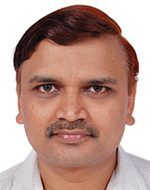 Bala Krishna Maddali (M. Bala Krishna) received Bachelor of Engineering (B.E.) Degree in Computer Engineering from Delhi Institute of Technology (presently Netaji Subhas University of Technology and formerly Netaji Subhas Institute of Technology), University of Delhi, Delhi, India and Master of Technology (M.Tech.) Degree in Information Technology from University School of Information Technology (presently University School of Information and Communication Technology), Guru Gobind Singh Indraprastha University, Delhi, India. He received Doctor of Philosophy (Ph.D.) Degree in Computer Engineering from JMI Central University, New Delhi, India. He had worked as Senior Research Associate and Project Associate with the Indian Institute Technology, Delhi, India. He worked as Research Associate with the University School of Information Technology, Guru Gobind Singh Indraprastha University, Delhi, India. He is presently working as Assistant Professor in University School of Information and Communication Technology, Guru Gobind Singh Indraprastha University, New Delhi, India. His areas of interest include computer networks, wireless networks, advances in mobile computing and communications, and the Internet of Things. He has publications in International Journals, Conferences, and Book Chapters. He is IEEE Senior Member. He has served as the Workshop Co-Chair and Tutorial Chair/Co-Chair for IEEE Conferences. He has organized the IEEE and ACM Workshops. He is Technical Program Committee (TPC) member for IEEE Conferences.
Bala Krishna Maddali (M. Bala Krishna) received Bachelor of Engineering (B.E.) Degree in Computer Engineering from Delhi Institute of Technology (presently Netaji Subhas University of Technology and formerly Netaji Subhas Institute of Technology), University of Delhi, Delhi, India and Master of Technology (M.Tech.) Degree in Information Technology from University School of Information Technology (presently University School of Information and Communication Technology), Guru Gobind Singh Indraprastha University, Delhi, India. He received Doctor of Philosophy (Ph.D.) Degree in Computer Engineering from JMI Central University, New Delhi, India. He had worked as Senior Research Associate and Project Associate with the Indian Institute Technology, Delhi, India. He worked as Research Associate with the University School of Information Technology, Guru Gobind Singh Indraprastha University, Delhi, India. He is presently working as Assistant Professor in University School of Information and Communication Technology, Guru Gobind Singh Indraprastha University, New Delhi, India. His areas of interest include computer networks, wireless networks, advances in mobile computing and communications, and the Internet of Things. He has publications in International Journals, Conferences, and Book Chapters. He is IEEE Senior Member. He has served as the Workshop Co-Chair and Tutorial Chair/Co-Chair for IEEE Conferences. He has organized the IEEE and ACM Workshops. He is Technical Program Committee (TPC) member for IEEE Conferences.
Talk Title: Multitier Cloud RAN for Efficient Data Management in HetNets: A 5G Perspective
5G C-RAN aims at high-speed data rates based on services and varying contexts in the network. The multitier architecture of C-RAN explores the data obtained from small-cell database, macrocell database, and internetwork server database. The context-aware services built at the user level refers to resource sharing, optimal connectivity and coordination across the devices in the network. Multitier CRAN enhances the data management in HetNets. IoT based architectures depend on the cyber-physical, context-aware, social networking and smart environment techniques to improve the human-to-machine, machine-to-machine and device-to-device communications. Social group relations enhance the interaction rates among users of diverging fields.
Magnus Madfors
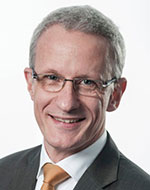 Senior director with more than 25 years of experience and a record of superior results in a variety of challenging international and multicultural environments. Unique blend of leadership and executive business savvy with competencies to develop strategic planning, establish priorities and delegate tasks, motivating teams to reach for their best, and following through to ensure success. Excellent negotiating and problem solving skills and a proven ability to manage and complete projects to the highest standard.
Senior director with more than 25 years of experience and a record of superior results in a variety of challenging international and multicultural environments. Unique blend of leadership and executive business savvy with competencies to develop strategic planning, establish priorities and delegate tasks, motivating teams to reach for their best, and following through to ensure success. Excellent negotiating and problem solving skills and a proven ability to manage and complete projects to the highest standard.
Excellent experience in research and innovation, motivation and team building, leadership that inspires high-performing teams, general and technical project management, negotiation, and mediation.
Examples are the establishment of one of Europe’s first knowledge and innovation community bridging pan-European education, research an innovation programs; The large-scale European Public-Private Partnership in communication technologies “5G”; and the development and implementation of the Long-Term Strategy of a world-leading standards organization.
Internationally established leader with high-level board positions in areas of research, standardization and procurement, public affairs, representing industry in government fora, industry associations and business strategy groups.
Man Cheuk Ng
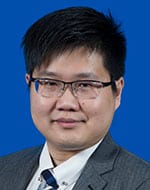 Dr. Man Cheuk NG, Alfred is an executive director and the Chief Technology Officer of SUGA International Holdings Limited, a leading electronics manufacturer listed on Hong Kong Stock Exchange (SEHK:912). He is setting the research and development strategies of the group according to the upcoming technology and market trends. Dr. Ng holds Bachelor of Engineering (1st Hon.) degree in Computing from Imperial College London, Master of Science (S.M.) and Ph.D. degrees in Electrical Engineering and Computer Science from Massachusetts Institute of Technology. His research focuses on modular hardware design methodologies that can greatly reduce hardware development time. During his time at MIT, he had collaborated with IBM, Nokia and Qualcomm in various research projects. Prior to joining the Group, Dr. NG has worked at Qualcomm’s New Jersey Research Center. Dr. NG is a member of 87th Hong Kong Trade Development Council Electronics/Electrical Appliances Industries Advisory Committee (2018/2019). He is also a member of City University of Hong Kong’s Electronic Engineering Departmental Advisory Committee.
Dr. Man Cheuk NG, Alfred is an executive director and the Chief Technology Officer of SUGA International Holdings Limited, a leading electronics manufacturer listed on Hong Kong Stock Exchange (SEHK:912). He is setting the research and development strategies of the group according to the upcoming technology and market trends. Dr. Ng holds Bachelor of Engineering (1st Hon.) degree in Computing from Imperial College London, Master of Science (S.M.) and Ph.D. degrees in Electrical Engineering and Computer Science from Massachusetts Institute of Technology. His research focuses on modular hardware design methodologies that can greatly reduce hardware development time. During his time at MIT, he had collaborated with IBM, Nokia and Qualcomm in various research projects. Prior to joining the Group, Dr. NG has worked at Qualcomm’s New Jersey Research Center. Dr. NG is a member of 87th Hong Kong Trade Development Council Electronics/Electrical Appliances Industries Advisory Committee (2018/2019). He is also a member of City University of Hong Kong’s Electronic Engineering Departmental Advisory Committee.
Talk Title: Commercial IoT Applications using 5G and LPWAN Technologies
During the past decade, it has long been predicted Internet of Things (IoT) will bring disruptive changes to many industries in near future. However, IoT deployments have been slower than expected due to limitations of traditional communication standards such as 4G, WiFi, Bluetooth in regard to cost, coverage, speed, latency and power. With technology advancements in emerging standards from 5G and Low-Power Wide-Area Network (LPWAN), the situation will dramatically improve. In this talk, I will present the recent market trends we observed as an electronics manufacturer. We will discuss how these new technologies facilitate various IoT applications in asset management, agriculture, consumer electronics and industrial IoTs. Finally, I will conclude with some future predictions.
Thas A Nirmalathas
Thas Nirmalathas is a Professor of Electrical and Electronic Engineering at The University of Melbourne, Australia. He is also the Director of Melbourne Networked Society Institute – an interdisciplinary research institute focusing on challenges and opportunities arising from the society’s transition towards a networked society.
Prof Nirmalathas obtained his BEng and PhD in Electrical and Electronic Engineering from the University of Melbourne in 1993 and 1998 respectively. Between 2000 and 2004, he was the Director of Photonics Research Laboratory (Melbourne Node of Australian Photonics CRC) and also the Program Leader of Telecommunications Technologies Program. From 2004 to 2006, he was the Program Leader for the Network Technologies Research Program in NICTA. He was also the acting Lab Director of VRL in 2007. Between 2006 and 2008, He was the Research Group Manager of the Networked Systems Group of Victoria Research Laboratory (VRL) at the National ICT Australia (NICTA), a premier Australian research centre of excellence in ICT. Between 2010 and 2013, he was the Head of Department of Electrical and Electronic Engineering. Between 2013 and 2014, He was the associate Director for the Institute for Broadband-Enabled Society. In 2012, he co-founded the Melbourne Accelerator Program (Australia’s first university based startup accelerator). He was its Director between 2012-2015 and provided the academic leadership between 2015 and 2017.
He has written more than 400 technical articles and currently hold 3 active international patents. His current research interests include energy efficient telecommunications, access networks, optical-wireless network integration and broadband systems and devices. He has held many editorial roles with the IEICE Transactions in Communications, IEEE/OSA Journal of Lightwave Technology and Photonics and Networks SPIE Journal. He is a Senior Member of IEEE, a member of Optical Society of America and a Fellow of the Institution of Engineers Australia.
Talk Title: Dynamic Deployment of Resources in Response to User Mobility Patterns in a Mobile Edge Computing Context
Mobile edge computing has emerged as a powerful computing context to support the enormous growth of diverse mobile applications that require high computational power, low latency, and high bandwidth. The user experience can be enhanced beyond the constrained resources limited by the user equipment by offloading computation-intensive tasks to the mobile edge hosts. In this talk, a mobile edge computing framework with suitable optimization strategies to address the resource distribution problem of mobile hosts in future networks with dynamic user mobility patterns will be discussed. Our findings will contribute to the development of a real-time network management and monitoring system in the ME system to detect changes in MEC resource requirements and optimize MEC resource orchestration based on the predicted user mobility and services’ usage demands.
Shane Rooney
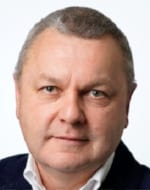 Dr. Shane Rooney is an Executive Director at the GSMA on the IoT Programme. Bringing together strategies and synergies across the M2M verticals and the wider IoT ecosystems. Shane had previously led the GSMA’s initiative in developing mobile solutions in Smart Cities and collaborating with cities like Barcelona, Dubai and Shanghai. His team has developed a wider range of Smart City Indicators, Case Studies and Business Cases demonstrating the importance of mobile technology. His team also have developed enablers in IoT Security and embedded SIM. He has led the launch of Cellular LPWA Networks Technology (NB-IOT & LTE-M) initiative globally and now promoting Cellular V2X technology. Previously he has been a Group Vice President with Etisalat , developing solutions for Energy, Security and Transport IoT solutions for Middle East, Africa and Asia. Before that he has worked with other Mobile Operators, Vodafone, Hutchison and 3 UK as well as launching and divesting of his own M2M company. Shane pioneered early telematics and connected car solutions for Ford Motor Company in the USA and Europe. He has extensive Global experience. He holds a PhD in Communications Systems specialising in Location Based Services and studied Business Marketing at IMD Switzerland.
Dr. Shane Rooney is an Executive Director at the GSMA on the IoT Programme. Bringing together strategies and synergies across the M2M verticals and the wider IoT ecosystems. Shane had previously led the GSMA’s initiative in developing mobile solutions in Smart Cities and collaborating with cities like Barcelona, Dubai and Shanghai. His team has developed a wider range of Smart City Indicators, Case Studies and Business Cases demonstrating the importance of mobile technology. His team also have developed enablers in IoT Security and embedded SIM. He has led the launch of Cellular LPWA Networks Technology (NB-IOT & LTE-M) initiative globally and now promoting Cellular V2X technology. Previously he has been a Group Vice President with Etisalat , developing solutions for Energy, Security and Transport IoT solutions for Middle East, Africa and Asia. Before that he has worked with other Mobile Operators, Vodafone, Hutchison and 3 UK as well as launching and divesting of his own M2M company. Shane pioneered early telematics and connected car solutions for Ford Motor Company in the USA and Europe. He has extensive Global experience. He holds a PhD in Communications Systems specialising in Location Based Services and studied Business Marketing at IMD Switzerland.
Talk Title: How are NB-IOT and LTE-M Progressing as a Technology
Dorothy Stanley
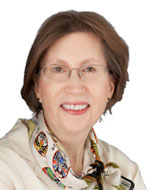 Dorothy Stanley, Hewlett Packard Enterprise, Head Standards Strategy
Dorothy Stanley, Hewlett Packard Enterprise, Head Standards Strategy
Dorothy has been involved in wireless LAN product strategy and standards activities since 2000, leading and participating in IEEE 802.11, Wi-Fi Alliance, Wireless Broadband Alliance and Internet Engineering Task Force (IETF) standards developments.
She currently serves as IEEE 802.11 Chair, having served as 802.11 Vice Chair from 2014- March 2018. She is also chair of Task Group TGmd (Maintenance) and has served as chair of the IEEE 802.11v (IEEE Std 802.11v™ -2011), IEEE 802.11 TGmb (IEEE Std 802.11™-2012) and IEEE 802.11 TGmc (IEEE Std 802.11™-2016) task groups.
Dorothy has led and contributed to numerous Wi-Fi Alliance Task Groups, has received Outstanding Contribution Awards from the WFA and now holds leadership roles in the WFA Location Marketing and Security Marketing groups. She is a member of the IEEE Standards Association.
Talk Title: IEEE 802.11 technologies: Enabling IoT Innovation from Sensors to Cars
IoT applications are continuing to expand, using a plethora of communication technologies. This talk highlights some of the IoT applications deployed today using IEEE 802.11 Wireless LAN technologies, and introduces the IEEE Std 802.11ah™-2016 Sub 1GHz standard, which enables low power and longer range IoT solutions. Existing Vehicle-to-Vehicle solutions and work under development in the recently approved project P802.11bd, Enhancements for Next Generation V2X, are also described. The IEEE 802.11 standard continues to be enhanced to provide lower power, high and low throughput solutions to enable Wireless LAN IoT applications.
Marco Ulrich
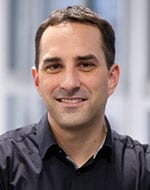 ABB Corporate Research Center Germany
ABB Corporate Research Center Germany
Talk Title: Autonomous Systems in Industry
Progress in IT and communication technologies are the main driver for the digital transformation in domains such as industrial automation and power industries. Devices, things and people are more and more connected in the IIoT (Industrial Internet of Things) and a vast amount of data becomes available. New emerging technologies such as artificial intelligence and advanced data analytics will impact the new digital industries in a strong way: old and established business models will fade out and new opportunities will appear. This will be the basis for autonomous systems in industry.
In this talk, an industrial view on this new eco-system will be provided and discussed: how do IoT technologies play together with artificial intelligence and data analytics and how will this lead to autonomous systems in industry? Finally, some concrete examples from an industrial ABB perspective will be provided. The focus will lie on industrial automation and electro-mobility use-cases.
Colin Wilcock
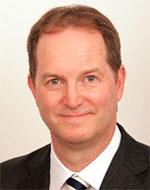 Colin Willcock graduated from the University of Sheffield, UK, with a B.Sc in Phyiscs in 1986, an MSc. In Astronomical Technology from the University of Edinburgh in 1987 and a Ph.D. in Parallel Computation from the University of Kent at Canterbury in 1992. Dr. Willcock joined Nokia in 1999, and is currently Head of Radio Network Standardization. He has participated extensively in standardization activities at ETSI, ITU-T and 3GPP, and also has extensive experience of European research having led a number of European projects. In March Colin was elected as the new board chairman for the 5G Infrastructure Association.
Colin Willcock graduated from the University of Sheffield, UK, with a B.Sc in Phyiscs in 1986, an MSc. In Astronomical Technology from the University of Edinburgh in 1987 and a Ph.D. in Parallel Computation from the University of Kent at Canterbury in 1992. Dr. Willcock joined Nokia in 1999, and is currently Head of Radio Network Standardization. He has participated extensively in standardization activities at ETSI, ITU-T and 3GPP, and also has extensive experience of European research having led a number of European projects. In March Colin was elected as the new board chairman for the 5G Infrastructure Association.
Talk Title: European 5G Research Status and Future
This talk will review the current status of 5G research & trials in Europe focusing on 5GPPP. Moreover an overview of related standardization and network infrastructure research in FP9 and smart networks will be provided.
Simon Wood
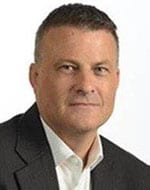 Simon is General Manager IoT within BT’s Enterprise division. Simon is responsible for building the IoT B2B business, providing specialist sales support to the various channels and developing BT’s strategic partner ecosystem for IoT. Simon has spent over 15 years in the telecoms industry in a variety of diverse commercial and leadership roles, before focusing more on digital transformation and monetisation of data. Most recently he led the business turnaround of two leading data providers to the legal profession helping them with agility and the challenge of falling market share to new digital disruptors.
Simon is General Manager IoT within BT’s Enterprise division. Simon is responsible for building the IoT B2B business, providing specialist sales support to the various channels and developing BT’s strategic partner ecosystem for IoT. Simon has spent over 15 years in the telecoms industry in a variety of diverse commercial and leadership roles, before focusing more on digital transformation and monetisation of data. Most recently he led the business turnaround of two leading data providers to the legal profession helping them with agility and the challenge of falling market share to new digital disruptors.
Talk Title: How BT is Realising the potential of IoT for Enterprise
The need for businesses to digitally transform their operations is now.
The future of networks is evolving, as we see 5G networks and LPWAN becoming a real thing. There are significant opportunities on the horizon. The rate of IoT adoption is building, the industry is becoming crowded and the competition is fierce. Playing to win in this market requires a combination of network, applications, security and IoT solutions. What opportunities are being created from network technology advancements? What are some of the challenges around wider IoT adoption? In this talk Simon will address all of these burning questions.



